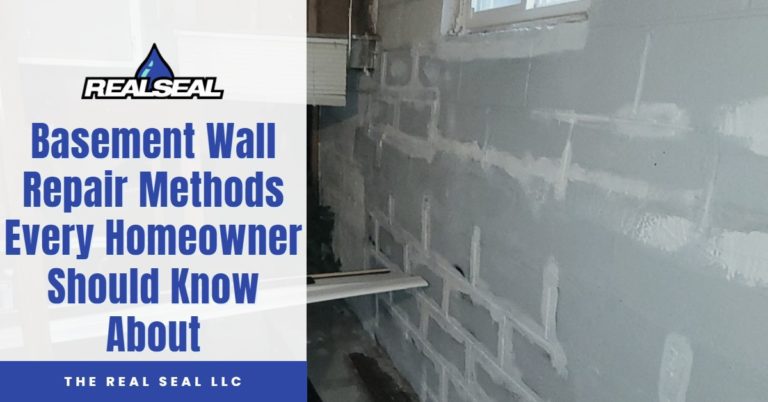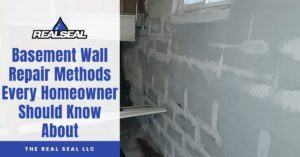Why should every homeowner know about basement wall repair methods? Because if your basement’s structural integrity fails, the safety of your home fails. In this article, you’ll learn when you need basement wall repair, what causes basement walls to fail, different basement wall repair methods, and the cost of basement wall repair.
When Do You Need Basement Wall Repair?
Besides noticing obvious cracks in your basement wall, here are some signs you need basement wall repair.
Insects
You have multiple sticking windows and doors – Sticking windows/doors is a very common sign you might need basement wall repair.
Your floors are uneven – If you are noticing you have sunken, bowed, or uneven floors, you could need basement wall repair.
- Your floors and walls are separating – Even the smallest separations could indicate you need basement wall repair.
- Your floors are cracking – Pay attention to cracks that run from one wall to another.
- Your walls are bowing or cracking – If your basement walls are cracked, bowing, sheering, or leaning, you definitely need basement wall repair.
- Your wallpaper is tearing – Look behind any torn wallpaper to see if the wall behind is cracked.
- Your walls are rotating – Wall rotation is when the outside of your foundation sinks deeper into saturated soil while the inside of your foundation, which sits on drier soil, pulls up. This movement can cause your walls to rotate.
- You have diagonal cracks running from the corners of doors/windows to the ceiling – If these cracks are under 1/10 of an inch, they could be the result of normal, uniform settling. If the cracks are larger than 1/10 of an inch, they could be a sign you need basement wall repair.
- Your moldings have separated – If you notice the moldings on your ceiling have separated, this could be a sign you need basement wall repair. Basement and foundation problems cause your floors, ceilings, and walls to move separately.
- You have stair-step cracks in brick or concrete block walls – These cracks are most notable in concrete block walls or in brick facia above your basement.
- Your chimney or porch is separating from the rest of your home – There’s a chance this might be related to a problem with the foundation under your chimney or porch. Call a professional to make sure it isn’t caused by a problem with your home’s foundation/basement.
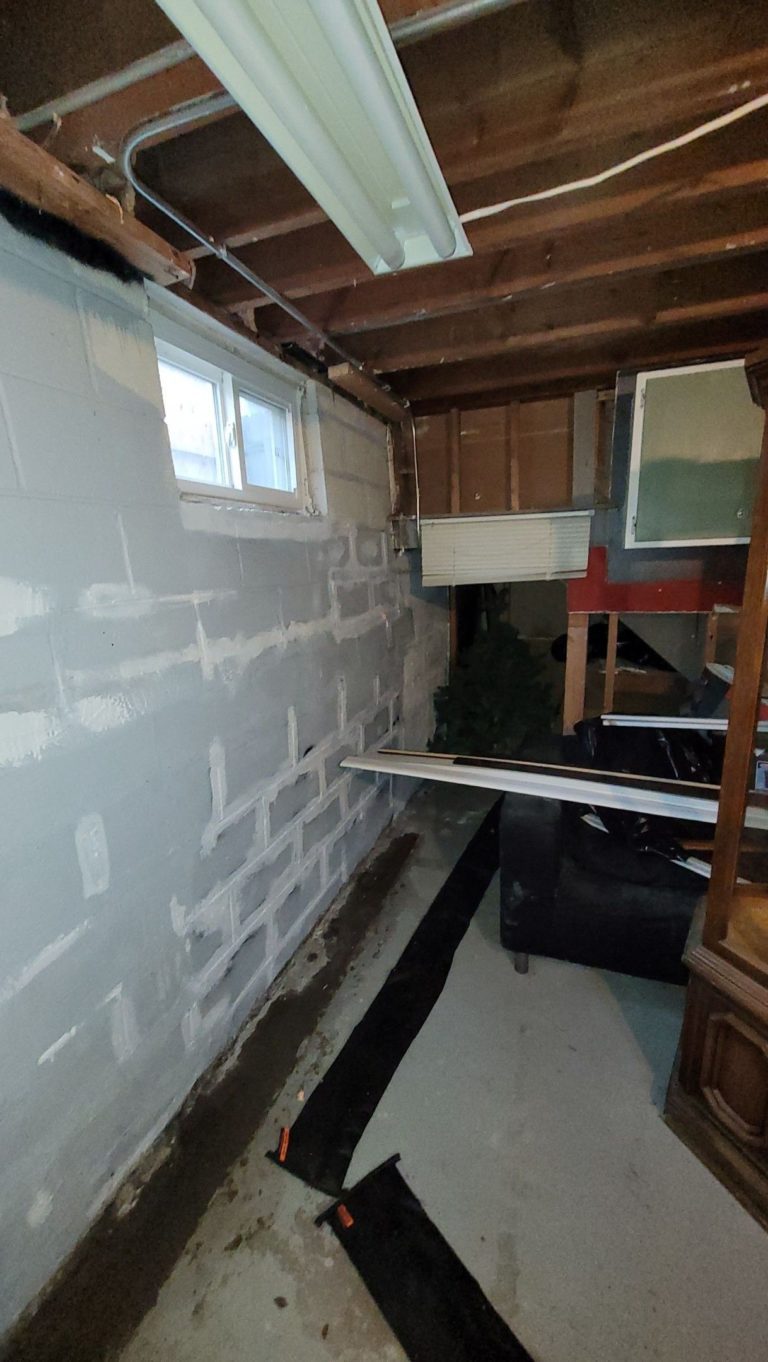
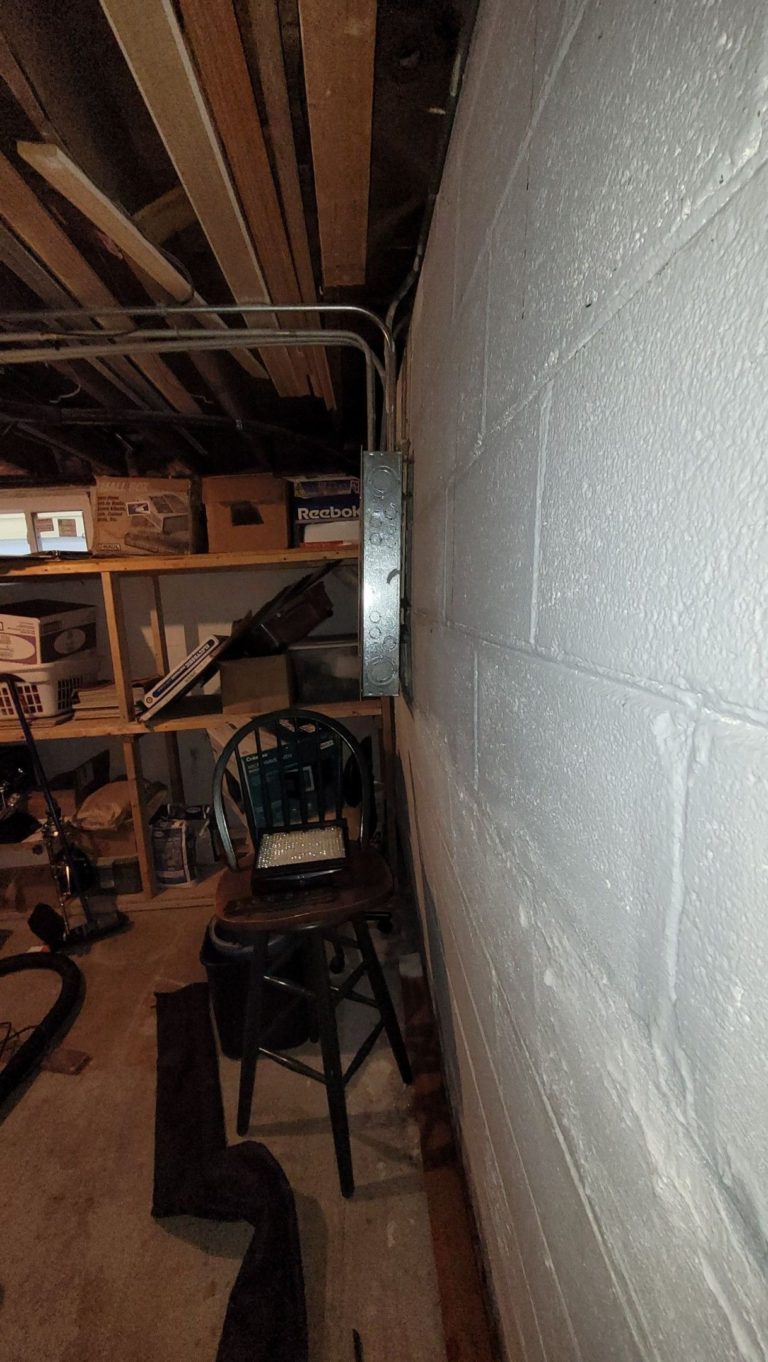
What Causes Failing Basement Walls?
Below are a few reasons why basement walls fail.
- Differential settlement – After it’s first built, your home will slightly settle into the soil beneath it in a process called uniform settlement. Differential settlement is when sections of your home settle at different rates. This type of settlement can cause your basement walls to bow, lean, or crack.
- Expansive soil – Expansive soil constantly expands and contracts based on moisture content. As the soil absorbs water, it grows. Then, when the soil dries, it shrinks. This growing-shrinking cycle places repetitive stress on your basement walls. The American Society of Civil Engineers estimates that 1/4 of all homes in the United States have been damaged by expansive soils.
- Hydrostatic pressure – If you don’t have a proper drainage system to stop water from pooling up at your foundation, your basement walls could experience hydrostatic pressure. As water builds up, the volume of the soil increases and exerts pressure against your wall.
- Frost-heave – Frost-heaving is when soil freezes, causing it to rise. Then, as the soil thaws, it settles back down. This up-and-down movement can cause your basement walls to bow, lean, or crack.
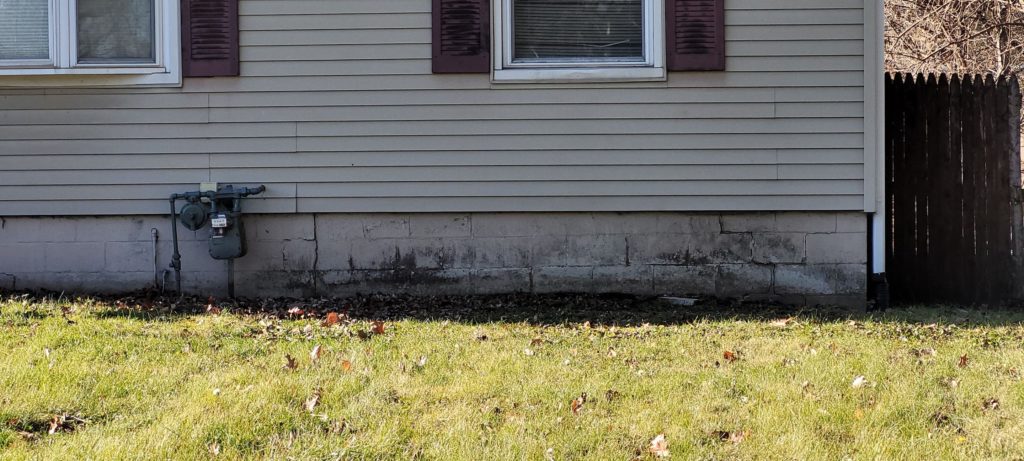
How To Repair A Basement Wall
Below are several repair methods that can fix bowing, leaning, sheering, or cracked basement walls.
- Wall plate anchors – Wall plate anchors are mainly used to correct bowing basement walls. First, an inside wall plate is attached to your bowing wall. Then, an anchor is placed in the dirt outside your basement. Lastly, a high-strength rod connects the anchor and plate together, pulling the wall outward.
- Helical tieback anchors – Helical tieback anchors are also used to correct bowing walls. But, they do not require an outside anchor or any excavation. The helical anchor is drilled from inside your basement like a corkscrew. As the anchor twists, your wall is pulled outward.
- C-channel anchors – C-channel anchors are used for sheering walls and help distribute the load across the entire vertical length of the basement wall. Instead of a wall plate, c-channel anchors use steel beams that are attached to the basement wall. Then, an anchor is placed in the soil outside and is connected to the beam using a high-strength rod. Lastly, the steel beam is anchored to your basement footer.
- Invisibeam carbon fiber straps – Carbon fiber straps are mainly used to repair bowing walls. They can be placed horizontally or vertically, depending on the type of damage. A galvanized bracket is installed to the top of your house frame. Then, the carbon fiber strap is placed across the wall and anchored to your basement footer.
- Carbon fiber staples – Carbon fiber staples are used to repair structural or non-structural cracks. They are placed inside grinded slots across the crack and fused into the concrete using a high-strength epoxy. Staples are mainly used alongside epoxy crack injection.
- Epoxy crack injection – Epoxy injections are used to fix any cracks you may have in your basement wall. A surface patch is created using an epoxy bonder. Then, the crack is injected with a 2-part epoxy that waterproofs and reinforces the basement wall.
- Steel push piers – Steel push piers are used to counter differential settlement. These piers are pushed deep into the soil beneath your basement until they reach load-bearing soil. Using hydraulic jacks, your basement/home is lifted back to the maximum practical level (the ultimate amount of foundational lift achievable before causing structural or cosmetic damage to a home).
- Helical piers – Also known as screwpiles, helical piers are used to lift sinking basements/homes. Instead of pushing into the soil, they are twisted like corkscrews. Read more about helical and push piers in this article about underpinning.
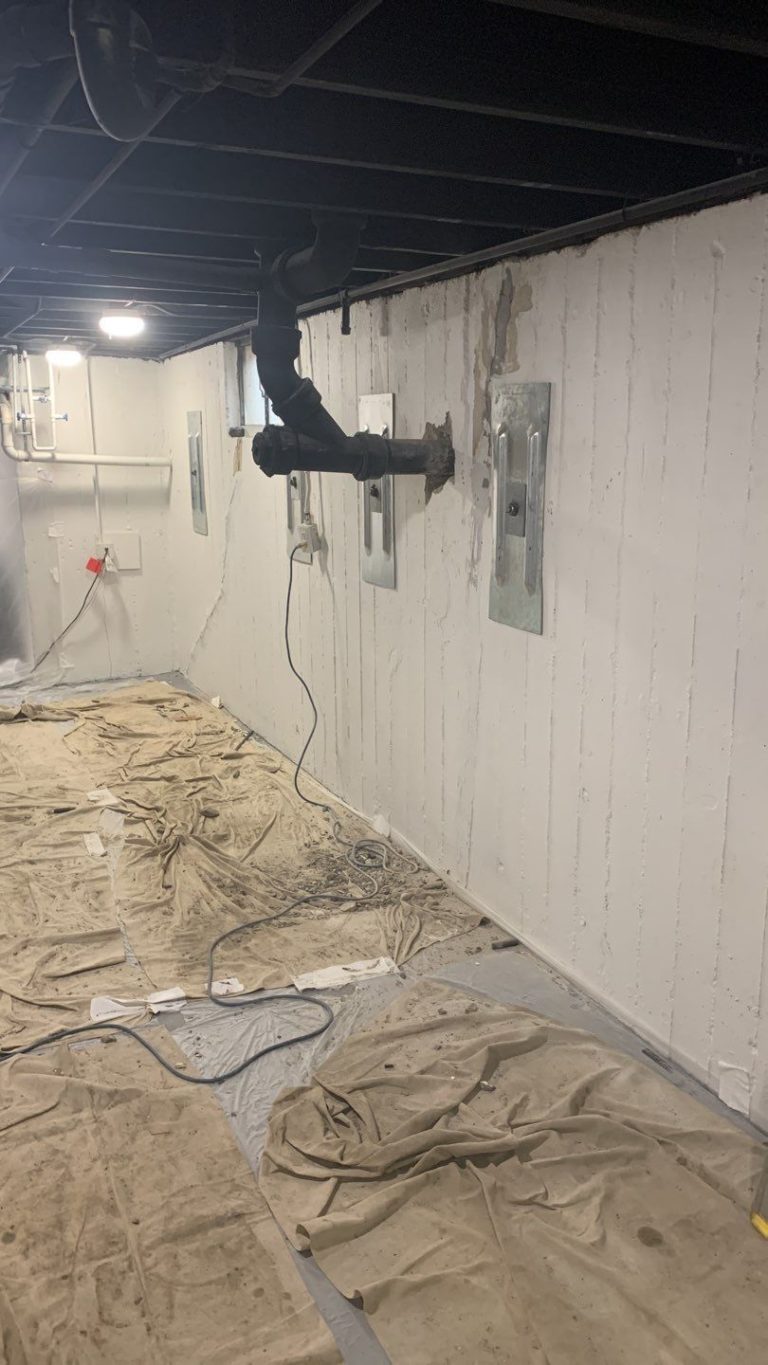
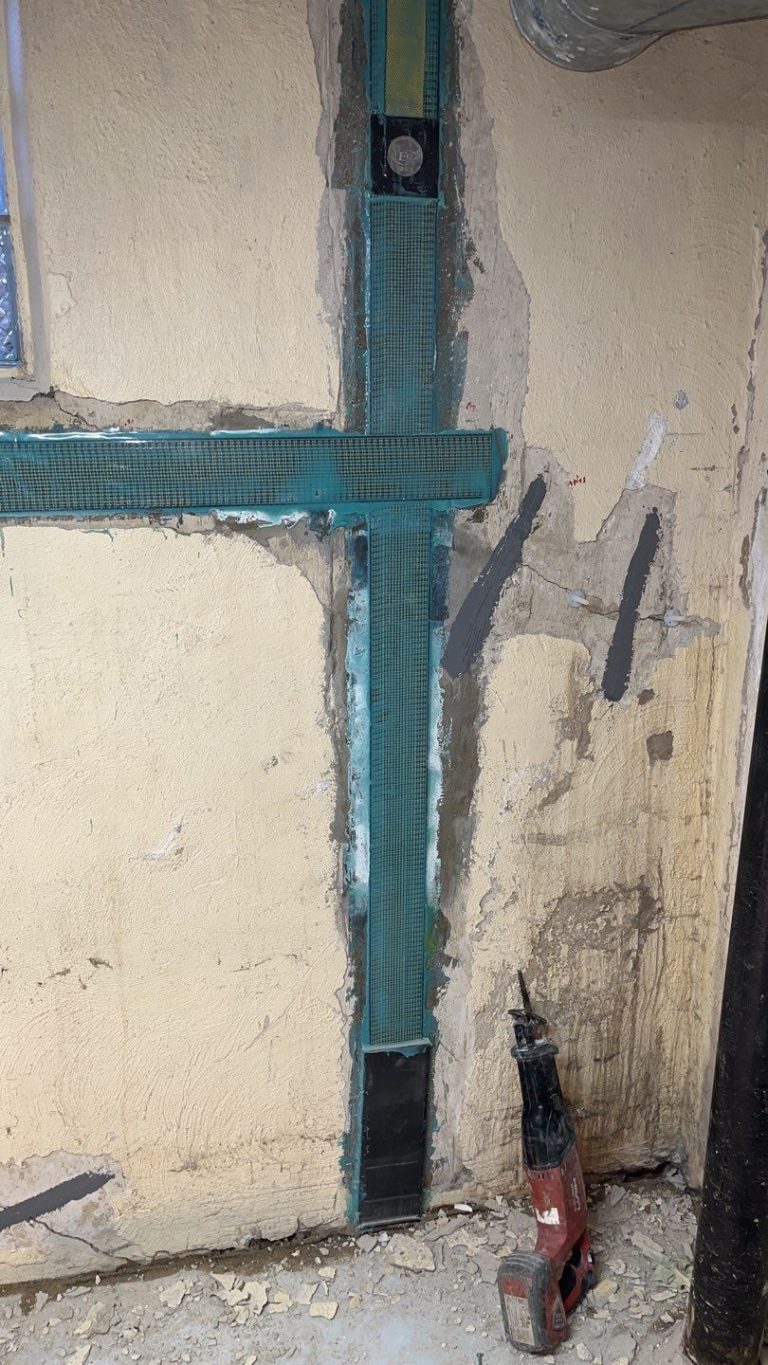
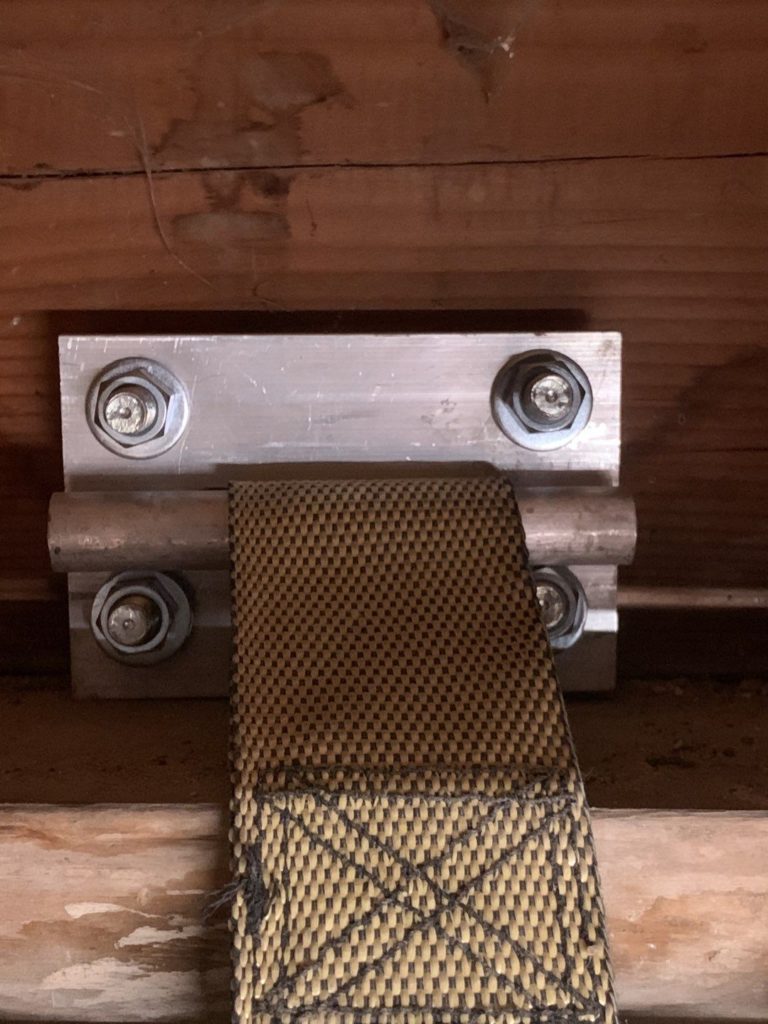
How To Repair A Basement Wall
Solutions such as wall plate anchors, helical tieback anchors, c-channel anchors, and carbon fiber straps can cost around $5,000 to $15,000. Solutions such as carbon fiber staples and epoxy crack injections can cost around $500 to $2,000. Underpinning using steel and helical piers cost around $12,000 to $16,000.
The Real Seal
If you live in the Greater Chicago area and need basement wall repair, who do you call? There are so many options out there. Who can you trust to provide quality service? You need the real deal, and you need The Real Seal. Call us today, and we’ll get you started with an in-depth inspection, free repair estimate, and a list of our finest solutions. We also provide basement waterproofing, crawl space encapsulation, crawl space repair, concrete leveling, and more.
